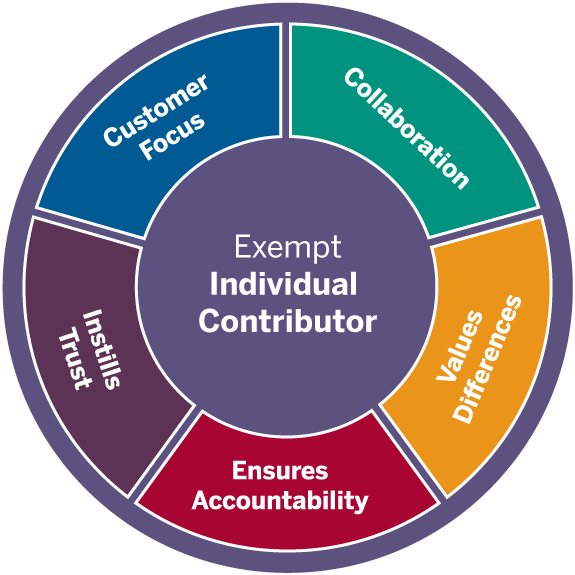Exempt Individual Contributor: Career
Optimizes Work Processes
Knowing the most effective and efficient processes to get things done, with a focus on continuous improvement
Great processes simply work. They align jobs and systems to better serve customers. They streamline communication, cut costs, and increase efficiency. With a well-defined process, performance is measured in results—not activity. The best processes are dynamic, nimble, and able to flex to changing conditions. Understanding and designing processes like these mean there is no finish line. It means continuously asking: “How can I make this better?”
You show this competency when you:
- Identify and create the processes necessary to get work done
- Separate and combine activities into efficient workflows
- Design processes and procedures that allow managing from a distance
- Seek ways to improve processes, from small tweaks to complete reengineering
How to develop this competency:
Start with your customers
Organizations exist to provide products and services to customers. Even internal functions ultimately impact customer service. So it makes sense to improve processes starting with the customer perspective. Collect data to analyze the internal or external customer experience. Where are the most complaints coming from? What do they like best? What needs to change to serve them better? Set up a process that provides service and support that your customers didn’t even know they needed.
Open yourself to change
You like your job. The works gets done and customers seem satisfied. And then something happens to change all of that. Change is essential to growth. Ask questions. Be curious not only about what is happening, but why. Look for ways to influence—not block—changes. Accept that change is unsettling, but it’s the new constant.
Use process mapping
When it comes to creating and using process, human beings are wired differently. Some are organized, scheduled, and methodical. Others jump in at the middle and push forward until they find a solution. If you struggle with laying out a process, mapping can help. A process map provides a visual depiction of workflow. It can show who is involved, what happens, what needs to happen, and in what order. It creates clarity and context from seemingly disjointed information. It literally draws a picture.
Learn more:
- Video: TED: How to turn a group of strangers into a team
- Article: Six Lean Principles that can Make You More Effective
- Article: Mind Tools Improving Business Processes: Streamlining Tasks to Improve Efficiency
- Article: 10 Surprising Ways to Improve Daily Workflow
- LinkedIn Learning: Optimizes Work Processes course collection

Exempt Individual Contributor
